First, make your beef stock. Some say this is the most important part. Julia Child has step-by-step instructions for this in her book Mastering the Art of French Cooking (starting on page 107 in the edition I have). This will take several hours – like 5 or 6 – of bone roasting (if you want a really brown, rich result), simmering and skimming. You may be able to get the bones from your butcher; who may be willing to chop them into 2- or 3-inch pieces for you. If not, get them wherever, and chop them into 2- or 3-inch pieces yourself. Proceed as directed by Julia, and by the end of the day, you will have beef stock.
I followed her directions the first time I made French Onion Soup, 50 years ago. By the end of the day, I was exhausted, I don’t remember how the soup tasted, and I didn’t make it again for 50 years. I suffered from PTSD (Positively Traumatizing STOCK Distress) which even a bowl of what must have been FABULOUS onion soup didn’t help.
So I recommend that you learn from my experience, and take the approach I now take: First, buy your beef stock – at HEB (or wherever you grocery shop). And, as you set the bowls before your guests, before anyone can ask, say: “Of course, I bought the stock; I suppose it might be even better if I’d made my own. But if I had, we wouldn’t be eating for 50 years.”
Aside from the fact that this is the truth, your guests will be bound to say, “Oh, this is FABULOUS just the way it is.” Though no one you’d have at your table will do so, should anyone say, “Yes, it’s better with homemade,” rejoice in knowing that you will have their seat at the table to fill with someone else more congenial (and more complimentary) the next time you serve onion soup.
Next, buy your onions – yellow ones – though any onions will do, but someone might be tempted to say, “I think yellow onions make the best soup.” (Vacant seat #2 for next time.) Since you’ll need lots of onions – many more than you could even imagine using in a single dish, this may be the time to buy the less expensive, bulk bag. You’ll probably save several dollars. Keep in mind, however, that the bulk onions are likely to be smaller than the hideously expensive, huge (have you noticed that onions are often the size of grapefruit these days?) onions sold one at a time. And the onions first have to be peeled. And peeling a dozen little onions, getting just the skin, not digging into the soft fleshy layers (and thereby throwing away all the cost-saving benefits of bulk) is a pain in the … onion (shall we say?).
So I recommend that you learn from my experience, and fork over whatever it takes for three or four of the huge ones. You can save money, if you need to, by not even filling one of those two already empty seats at the table, and thus perhaps not needing to open one more bottle of wine (since they probably drank too much wine, or they wouldn’t have made their injudicious comments in the first place).
Next, slice your onions. This is likely where the tears will come in (if they haven’t already flowed thanks to those ham-tongued former guests). If you’re clever or devious, you may be able to cajole or guilt your spouse into slicing them for you. In my experience this doesn’t often work, but occasionally even the most wary of spouses has a moment of weakness, so it might be worth a try. Be warned, however, that he/she/they will not slice them thin enough to please you. It seems to be an astounding universal truth that the phrase (in English for sure, but probably in any language), “Slice them thin,” conveys no meaning to spouses – certainly as applied to onions, but also to the cabbage being sliced for coleslaw, bread being sliced for sandwiches, plum torts being stretched when guest #3 who will not be invited back again has called from the driveway asking if it’s OK for him/her/them to bring their new significant other (who wasn’t even in the picture when you extended the invitation a couple of days before). So I recommend that you learn from my experience, and slice your own.
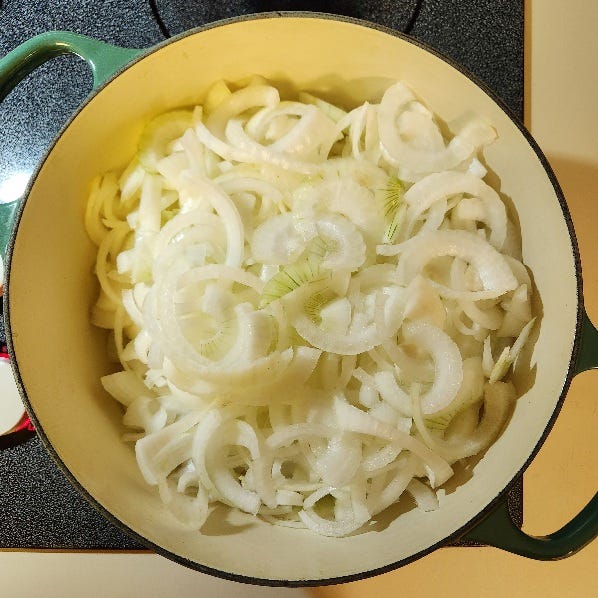
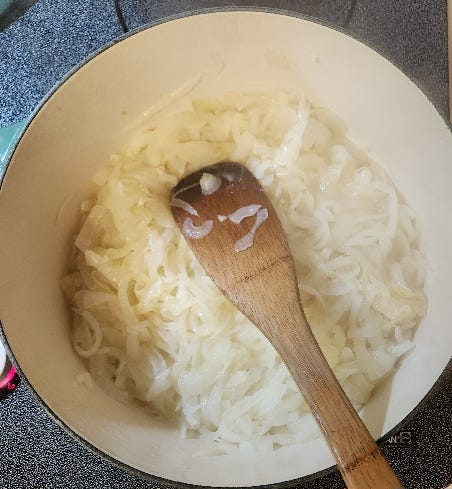
Since we’ve already learned so much from this adventure, we won’t even think of trying to palm off the job of caramelizing the onions in three tablespoons of butter, in your heavy Dutch oven, over medium heat, stirring every few minutes so they won’t stick and burn, as they reduce and brown, slowly, slowly developing a depth of flavor that will compensate for any deficiency in the beef stock (you hope and trust). This will take close to an hour. Though you won’t have to be standing at the pot the whole time, don’t even think that you can do anything that requires more than a quarter of a brain while the magic is happening, because you’ll have to be running back and forth, stirring, stirring since they will burn if you don’t. Then you’ll have to start over from at least the onion slicing step, IF you had foresight enough (and low enough confidence in your cooking skills) that you bought two bags of the bulk onions just in case. Though really, if you find yourself in this predicament, you’re probably just going to upend that bottle of wine, and not even answer the door when the guests ring later on – not that you could answer it after polishing off the wine and passing out. Let your spouse explain, since he/she/they wouldn’t even help by slicing the onions thin enough anyway.
Once the onions have reached flavor perfection (OK, maybe an hour and 15), add the wine and sherry (if you haven’t already drunk them all in despair).
Then a tablespoon of flour, and the delicious-enough-for-those-who-hope-to be-invited-back beef stock, salt and pepper to taste, and get ready for the REAL test of your cooking skills:
The Gratinée-ing.
This is the finishing step that will make or break your reputation with any tattered remnant of guests who may still be invited to experience the glory with you (and heap you with praise). By all means, if you have a set of those flame-proof bowls that will allow you to do the finishing – toasted rounds of French bread, with slatherings of grated Gruyere (buy the pre-grated kind, my advice) – directly under the broiler in the bowls, then use them. IF you really think you’re going to be able to get the tray of scorching bowls out of the oven and before the guest (if one’s still there) without scorching yourself or them. Otherwise, learn from my experience and broil the cheesy breads separately, put them in the bowls, surround with soup, and dare with a cutting glance anyone to comment on anything more perilous than the weather.
And then the most important part:
Since this has grown a little long, I’ll end quickly with the suggestion that you learn from my experience and disregard everything I’ve said before (except about buying the stock, getting big onions, broiling the croûtes separately, and only calling the spouse when it’s time to eat) and follow this recipe, by Sara Bonisteel for the New York Times, instead. I used it recently in making soup for a guest who said (she will DEFINITELY be invited back): It’s the best onion soup I’ve ever had!
Isn’t cooking fun!?

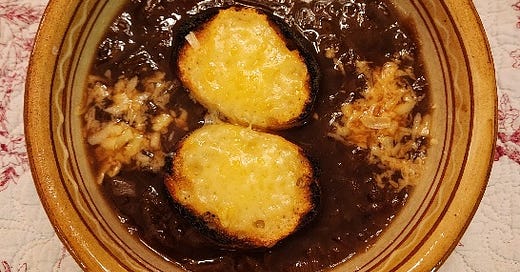



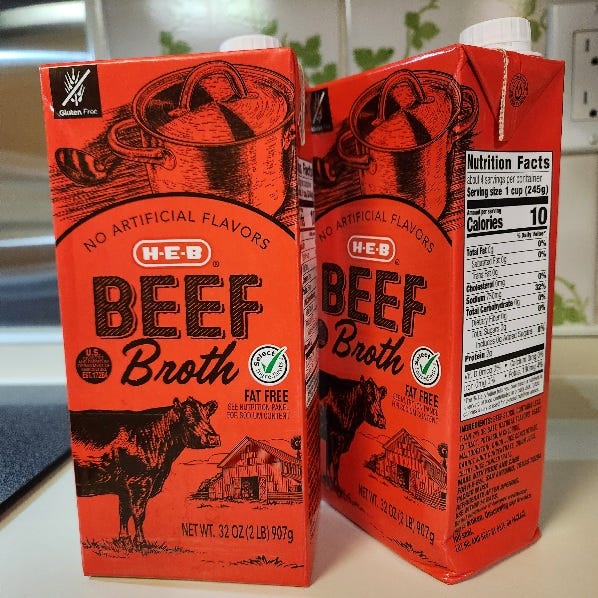

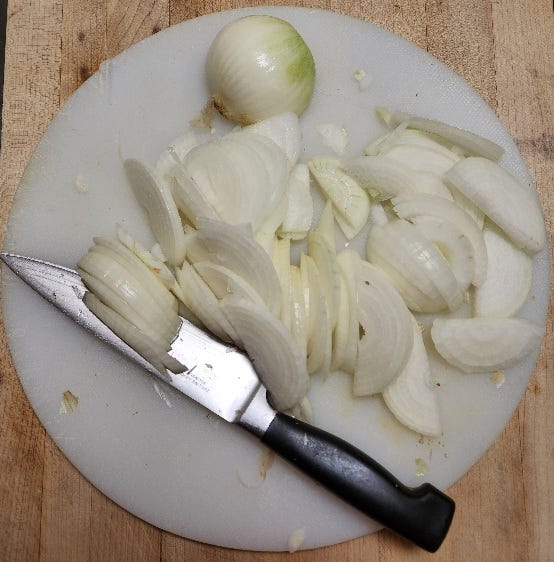
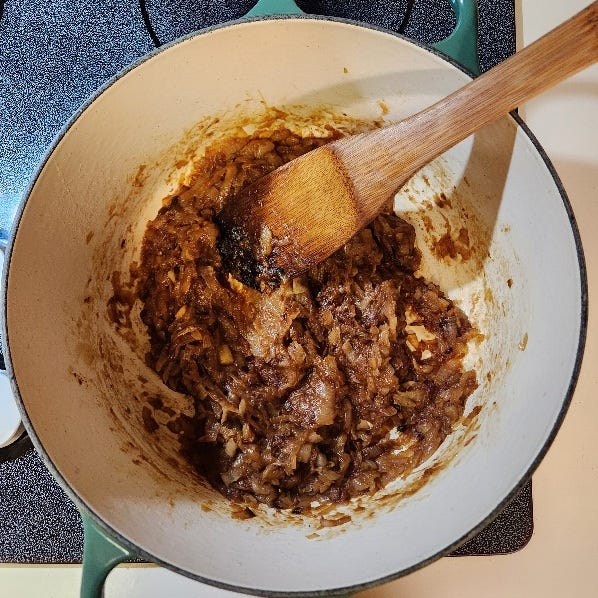
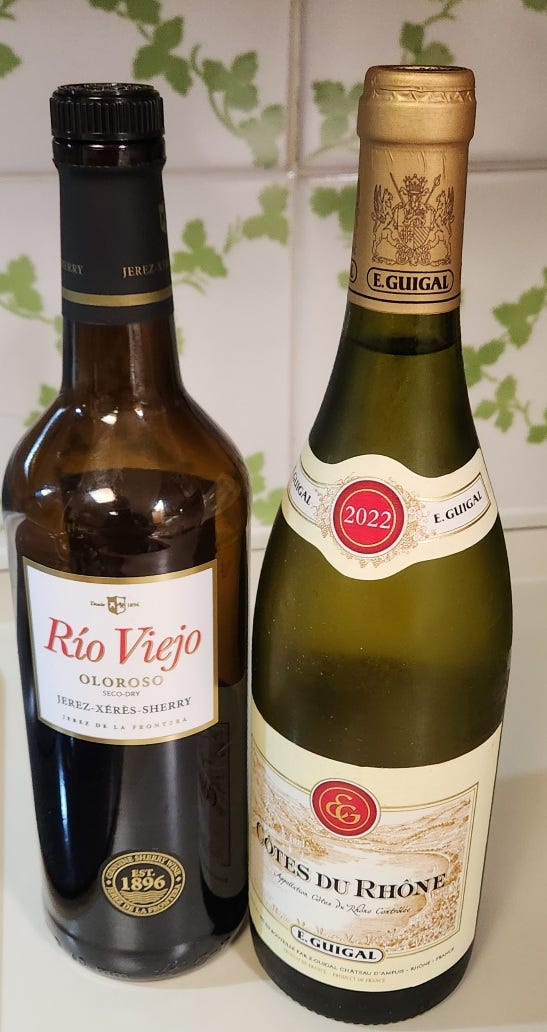

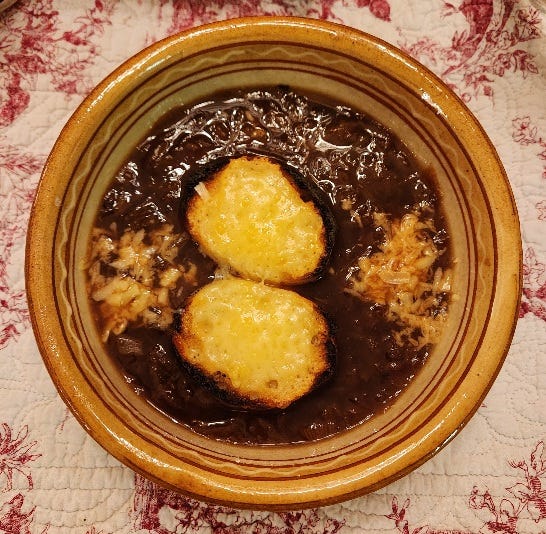
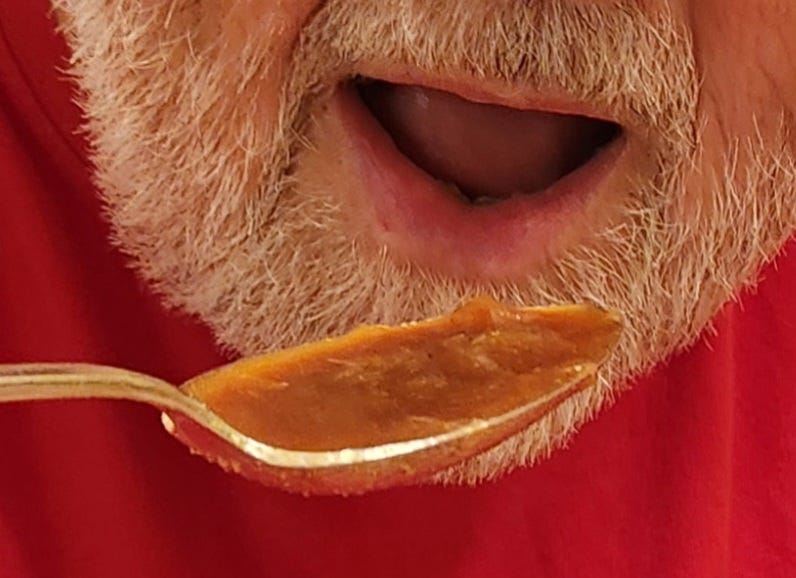
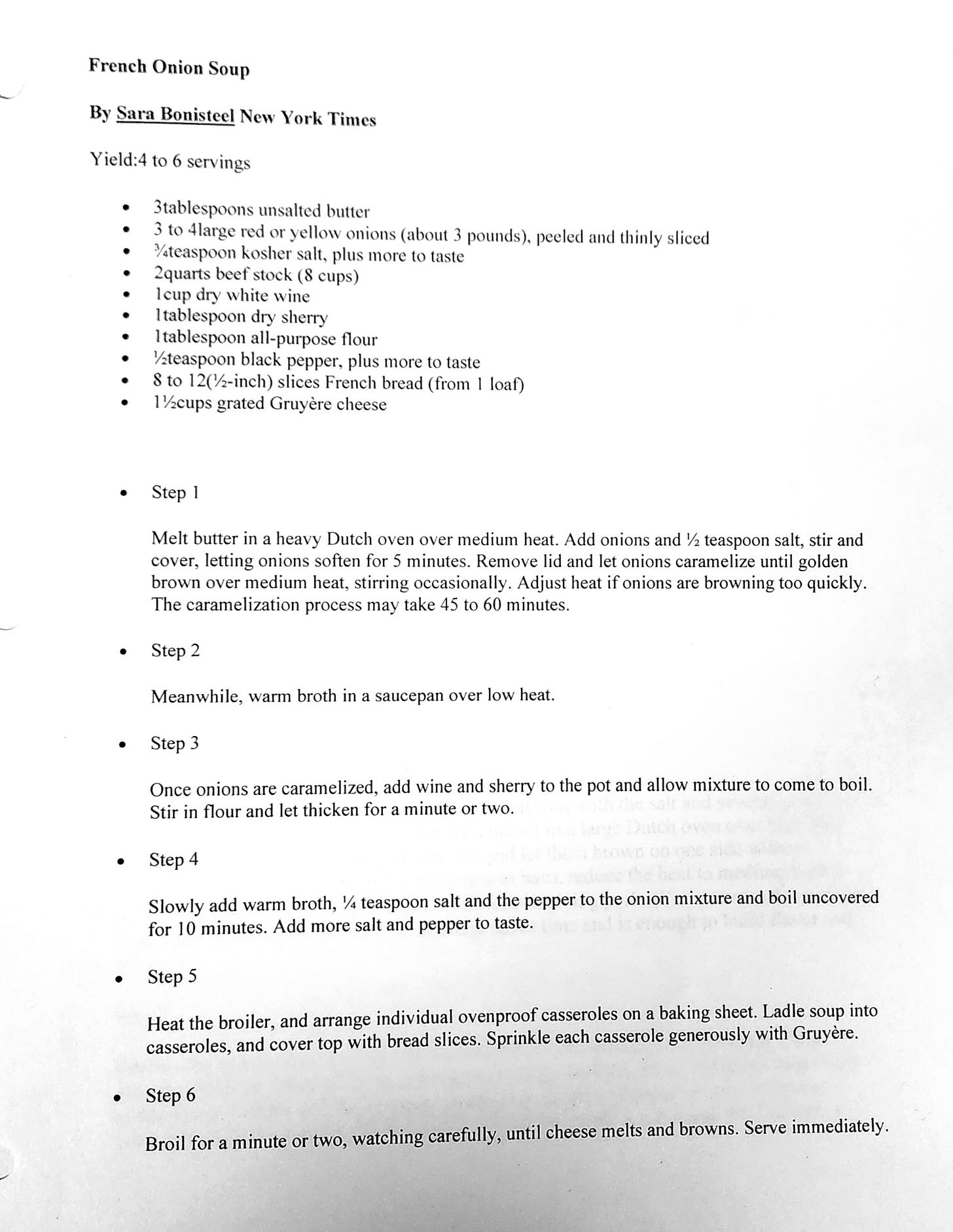
Laughed through it and loved it! Plus, some useful cooking tips sprinkled throughout. Thank you for the wonderful essay that has almost inspired me to try it. Or can I come to your house?
So funny! A delicious soup for which I gave a few stirs of the onions. Credit where credit is due.